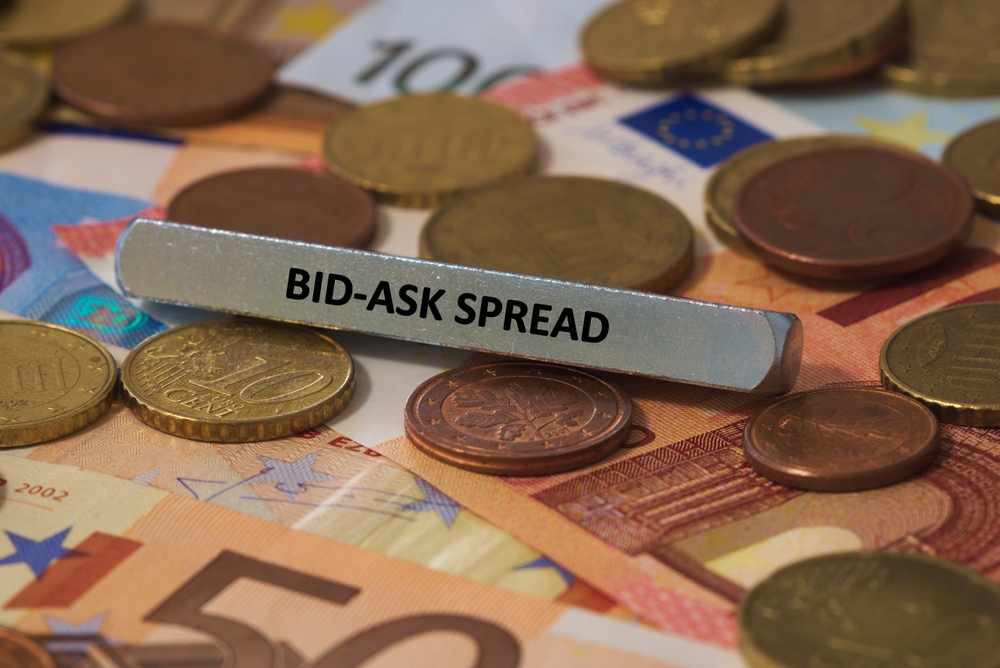
In this lesson, we will cover the following:
- The two prices in the financial markets.
- What is the spread, and why it’s important?
Prices in the Forex Market
There are always two prices when you trade the forex market, the stock market, or any other financial market.
- Bid Price – The price that you use as your reference when you are going to enter a Sell position.
- Ask Price – The price that you use as your reference when you are going to enter a Buy position.
So, just like going to a money changer to exchange your money, you will see that they have both the Sell and Buy prices for a specific currency.
Let me explain further using this chart:
This chart features the EURUSD, and you can see two prices: the Bid price on the left and the Ask price on the right.
If you want to open a Sell position, you can use the Bid Price as your reference. If you want to open a Buy position, you can use the Ask Price as your reference.
Let’s use that as a guide.
There is a Bid Price of 1.07962 and an Ask Price of 1.08008 for EURUSD.
When you click Sell, you need to focus on the Bid Price (1.07962) as your reference.
Let’s say the price goes down to Bid 1.07500 and Ask 1.07523. This means you are getting a profit. When you click close for this example, which means that you are “clicking” Buy to close the position, you must focus on the Ask Price as your reference.
The same concept applies when you plan to Buy EURUSD. When you click Buy, the price you must focus on is the Ask Price (1.08008).
If you want to close the position, click Sell to close the position and focus on the Bid Price as your reference.
Spread
Now that you know what Bid and Ask Prices are, it’s time you learn about the spread: the difference between the prices.
From this example, you can see that the EURUSD has a spread of 4,6 pips.
The spread plays an important role in your trade because this will affect your result. Some brokerage firms may charge you a little, and some don’t charge any fees to trade. In this case, your transaction cost will be in the form of a spread.
Let’s explore further.
If the spread is your transaction cost, then a wider spread between the Bid and Ask price means the transaction cost is higher.
Example:
If you refer to this EURUSD spread, the transaction cost is 4,6 pips when buying or selling 1 standard lot of EURUSD. Because the pip value of EURUSD is 10USD per pip per lot, your transaction cost will be 46 USD.
Every time you enter a position in EURUSD, you must pay this transaction cost first before getting the profit from the price movement. Remember that the spread may change wider or tighter based on the market volume.
Note that your transaction cost to cover is higher if you have a wider spread. If your spread is tighter, your transaction cost to cover is lower.







